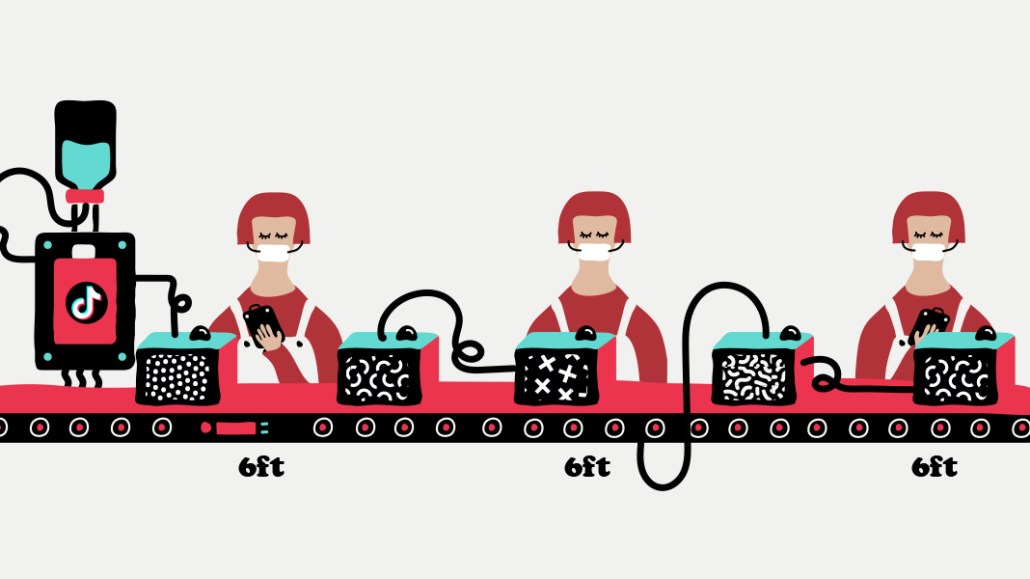TikTok is coming after Snapchat with a new augmented reality ad format

TikTok is readying the launch of a new augmented reality ad format as the popular video app continues to rapidly ramp up its ad product development to bring itself in line with the likes of Instagram and Snapchat.
The “AR brand effect” ad will allow TikTok users to add interactive visual effects from advertisers to their TikTok videos that interact with the physical environment around them, according to people familiar with the plans. A car could zoom the length of the kitchen table, or the creator could interact with an advertiser’s mascot as it bounces around the room, for example.
The ads will be clickable and feature music that plays as the user shoots their video. The exact name of the ad product may change when it launches. The global rollout is due at some point in the third quarter of this year with unknown pricing.
“We’re always exploring new ways to bring creativity and joy to our community. Creative effects are a fun way for our users to express themselves and for brands to bring an interactive element to their campaigns with branded creative effects,” said a TikTok spokesperson “We’re experimenting with ways we can continue making this a valuable experience for brands, and will share more details when we have them.”
The new ad product will put TikTok head-to-head with Snapchat’s Sponsored Lens and Word Lenses augmented reality formats and Instagram’s AR filters, though the latter is not yet an ad product.
TikTok already offers a product called Branded Effect, which lets users add 2D animated lenses to their videos that can be triggered by face and hand movements. Last year, Digiday reported those effects cost $100,000 and were created by TikTok’s in-house creative team. When Snapchat initially launched its Sponsored Lens the cost — around $500,000 a day for a national takeover in the U.S. — was prohibitive for many advertisers. But over time, Snapchat introduced Lenses to its ad auction, bringing down the price, which is billed on a CPM basis. Snap said on its first-quarter earnings call last month that people are playing with its lenses (not all of which are sponsored) 85% more than they did last year and that self-service is now the predominant way advertisers buy its augmented reality products.
.
TikTok has been quickly following the advertising roadmap laid out before it by other social platforms. Meanwhile its user growth is soaring. The TikTok app and its Chinese version, Douyin, topped 2 billion downloads on the Apple App Store and Google Play Store in March, according to measurement firm SensorTower.
While TikTok is following a similar path to its competitor social media platforms in rolling out new ad products, “they are doing it a lot quicker,” said Paul Kasamias, managing partner of performance at media agency Starcom. “Their ability to scale and move forward is frightening, really. If they get it right they’re going to be a huge player in the next six months to a year.”
News of the forthcoming AR effect ads follows Digiday reporting last month that TikTok is also testing a new ad format that links advertisers to its prominent influencers to let those creators anchor a call-to-action button in their videos, which can link out to an ecommerce site.
More in Media

Media Briefing: Publishers’ Q3 earnings show revenue upticks despite election ad pullback
Q3 was a mixed bag for publishers, with some blaming the U.S. presidential election for an ad-spend pullback.

Workplace policies poised for seismic shakeup post-election
Topping the list of expected changes: a rollback of many health insurance reforms provided under the Affordable Care Act, better known as Obamacare.

News publishers didn’t sustain a traffic bump in the 2024 presidential election week like they did in 2020
Unlike the drawn out process of the presidential election in 2020, this year’s election quickly revealed that Donald Trump would be the winner – and that meant less of a sustained traffic bump to publishers.







